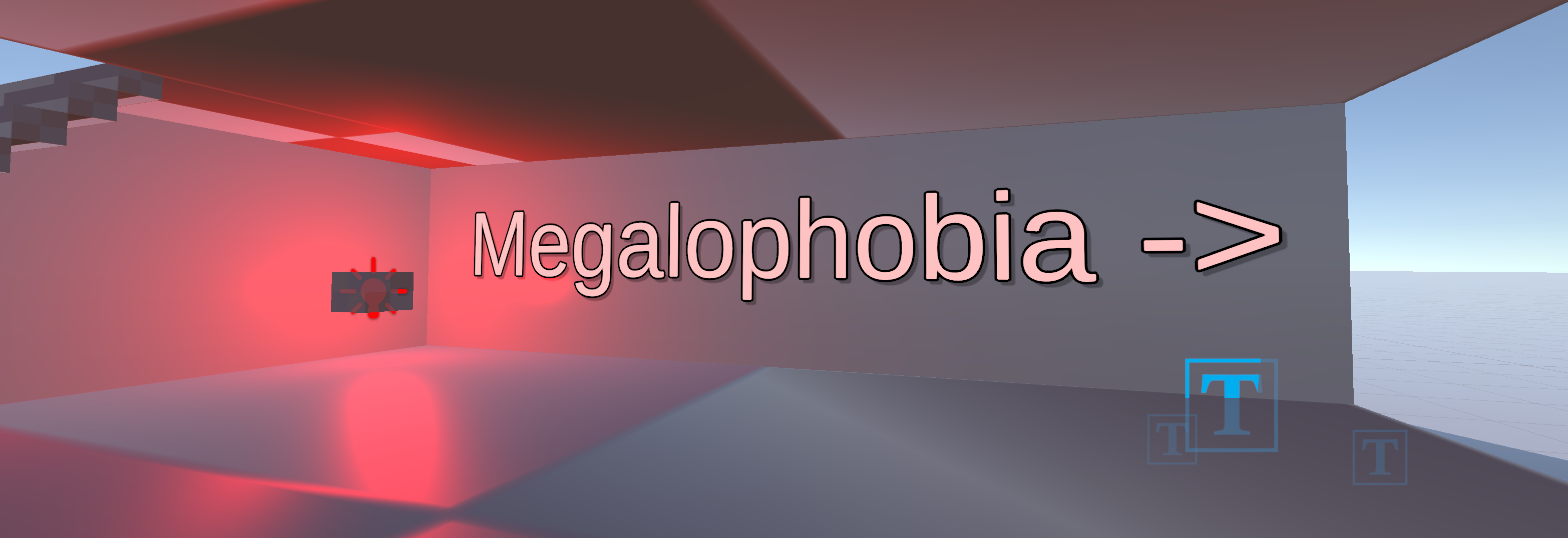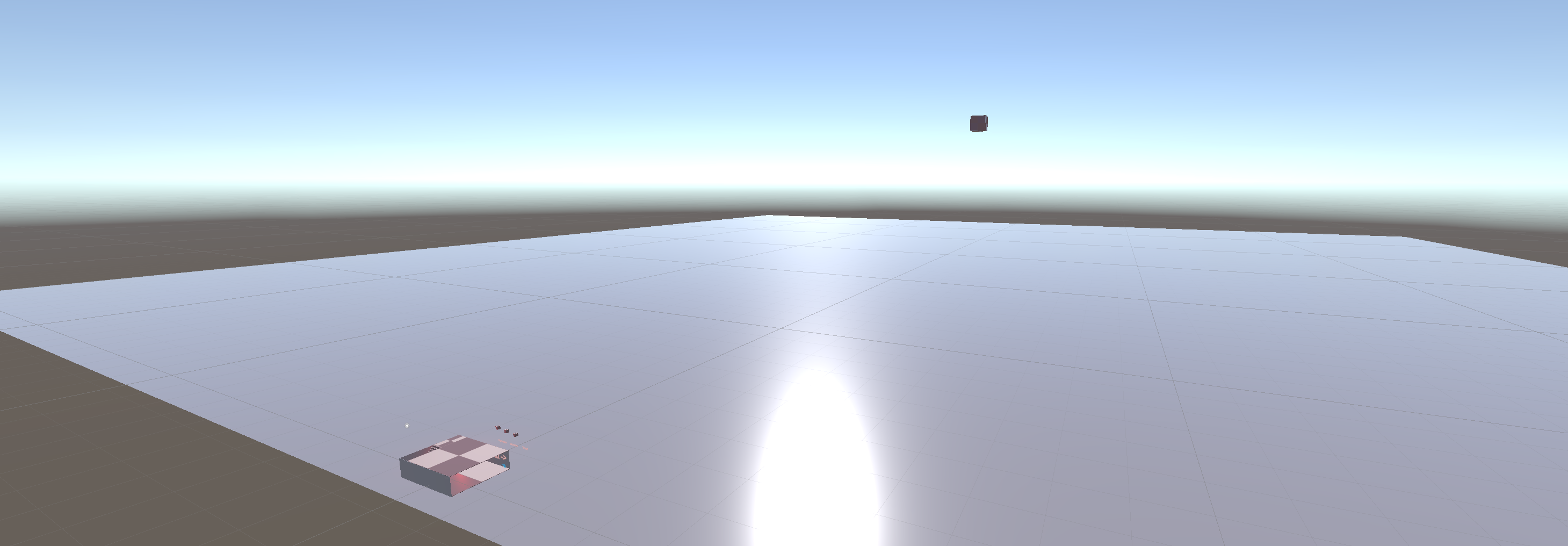Assignment 2/3 - Fear and Phobia exposure through Unity in VR
A downloadable tool for Android
Elevator Pitch: This paper explores the transformational potential of a Unity-based program aimed to treat megalophobia, which is an irrational fear of enormous things or open spaces. This program enables people to progressively address their anxieties by using code to adjust the sizes of objects inside a controlled virtual environment. As a result, individuals develop the resilience and confidence necessary to effectively manage their anxiety.

Introduction:
The dread of big things and/or wide-open areas is known as megalophobia. This dread may naturally present afflicted persons with significant challenges, which can have an effect on both their day-to-day life and their overall well-being. The advent of technology has opened up new doors for the treatment of problems of this psychological kind, and our program which is based on Unity stands out as one of the most promising potential solutions. This program aims to give persons who are battling megalophobia a hands-on exposure treatment experience that is adjustable and controllable, and it does so by letting users interact with and alter the dimensions of objects.
Functions of the Program:
To adjust the proportions of virtual objects, the Unity program relies on a set of coding instructions. As a method of exposure treatment, users may progressively address their fear of huge things in a safe atmosphere by adjusting the size of a cube that is placed in the center of a plane. They do this by grabbing one of three labelled smaller cubes, the label corresponding with the action they would like to do, reduce, increase, or reset. This is accomplished via the use of C# scripting and object interaction. When the script sees that an input has been registered on the controller of the player that connects with the object, the script runs an update to the main cube and either increases or decreases the size of the cube at a gradual pace. By doing this, the program provides users with an opportunity for interactive participation, allowing them to take an active role in confronting their anxieties and responding to stimuli at their own speed.

Advantages for Individuals Who Suffer from Megalophobia:
Gradual Exposure: The program uses an incremental approach to increasing item sizes, which is consistent with the concepts of exposure treatment. This allows users to gradually develop tolerance and resistance to their phobias by confronting their anxieties in a controlled environment.
Empowerment and Autonomy: The program enables people to tackle their fears in a proactive manner by providing them control over their exposure experience. This in turn fosters increased levels of both self-confidence and agency in the participant.
Safe and Controlled Environment: The virtual environment guarantees that users may explore their fears without immediate repercussions, establishing a feeling of safety and minimizing anxiety associated with real-world exposure. This is accomplished by ensuring that users can explore their fears without any negative effects.
Cognitive Reframing: When users experiment with different object sizes, they engage in cognitive-behavioral processes. These processes enable users to reframe uncomfortable thoughts and build effective coping mechanisms.
Application to Situations from the Real World:
Therapeutic settings: Mental health providers have the ability to include the program in exposure treatment sessions, adapting the situations to the specific requirements and advancements of particular patients.
Self-Guided Therapy: The program might be made available for people to utilize on their own, giving them the ability to take control of their megalophobia at their own pace and in their own time.
Integration of a greater Virtual Reality: The Unity program has the potential to be integrated for usage in a variety of other virtual reality platforms that are more immersive, which would provide even more assistance as an exposure experience.

Concluding remarks:
It would be feasible to see the program which enables the use of object manipulation to alter object sizes as a potentially useful tool for the treatment of megalophobia. Individuals are given the ability to progressively address their anxieties via the use of this intriguing method, which helps to promote resilience and coping mechanisms by offering an engaging and controlled environment for exposure. The potential effect of this program on enhancing the quality of life for those who suffer from megalophobia is both considerable and exciting, given the rapid pace at which technological advancements are being made.
References:
CDiaz-MS, C. (2022) Hand interaction examples - MRTK 2, Hand interaction examples - MRTK 2 | Microsoft Learn. Available at: https://learn.microsoft.com/en-us/windows/mixed-reality/mrtk-unity/mrtk2/feature... (Accessed: 12 August 2023).
Jalnionis, K. (2022) 5 common lightmapping problems and tips to help you fix them, Unity Blog. Available at: https://blog.unity.com/engine-platform/5-common-lightmapping-problems-and-tips-t... (Accessed: 12 August 2023).
Martin, E. and Van, L.C. (2019) We have you covered with the measured materials library, Unity Blog. Available at: https://blog.unity.com/manufacturing/we-have-you-covered-with-the-measured-mater... (Accessed: 12 August 2023).
MaxWang-MS, F. (2023) Mixed reality toolkit 3 developer documentation - MRTK3, Developer Documentation - MRTK3 | Microsoft Learn. Available at: https://learn.microsoft.com/en-us/windows/mixed-reality/mrtk-unity/mrtk3-overvie... (Accessed: 12 August 2023).
qianw211, A. (2022) Unity Development for hololens - mixed reality, Mixed Reality | Microsoft Learn. Available at: https://learn.microsoft.com/en-us/windows/mixed-reality/develop/unity/unity-deve... (Accessed: 12 August 2023).
Sean-Kerawala, B. (2023) HP Reverb G2 Controllers in unity - mixed reality, Mixed Reality | Microsoft Learn. Available at: https://learn.microsoft.com/en-us/windows/mixed-reality/develop/unity/unity-reve... (Accessed: 12 August 2023).
Technologies, U. (2017a) Controlling gameobjects using components, Unity. Available at: https://docs.unity3d.com/560/Documentation/Manual/ControllingGameObjectsComponen... (Accessed: 12 August 2023).
Technologies, U. (2017b) Time and framerate management, Unity. Available at: https://docs.unity3d.com/560/Documentation/Manual/TimeFrameManagement.html (Accessed: 12 August 2023).
Thetuvix, A. (2019) OpenXR - mixed reality, Mixed Reality | Microsoft Learn. Available at: https://learn.microsoft.com/en-us/windows/mixed-reality/develop/native/openxr (Accessed: 12 August 2023).
Leave a comment
Log in with itch.io to leave a comment.